Choosing the right walker.
Walkers come in a variety of styles and sizes. Below we will go into detail on all the styles and features that are offered on walkers.
Standard walkers
Standard walkers have a 300 pound weight capacity unfold for easy transportation. They have height adjustable legs so that the walker can fit you properly. Most walkers come with front wheels and glide on the back of the adjustable legs so you can have a normal gate when using the device. Certain walkers have triggers as handles so you can fold it up easily while other versions have buttons which you have to push down in order to fold the walker for transportation reasons. They make standard walkers in junior and adult sizes so you can pretty much fit anyone that is between 4’8 all the way up to 6’6

Walkers with seat (also known as rollators)
This type of walker has become extremely popular over the last 20 years. The Rollator comes with a seat option and gives you the ability to sit when you need a rest which can be very handy when walking long distances. This version of Walker does fold up. It has a lot more options than your standard walkers. Most Rollators have 6 inch wheels but some of the versions have 8 and 10 inch wheels which are great for outdoor use. They even have different back styles to make sitting more comfortable. Some versions of the Rollators are adjustable in height and can be extremely handy when sitting down and getting up. Most of them have a pouch under the seat which comes in very handy to put small items.
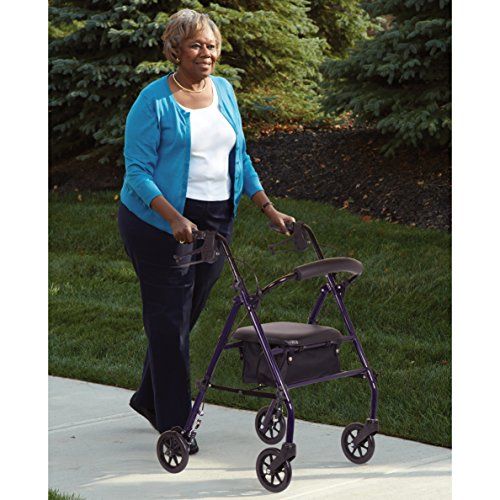
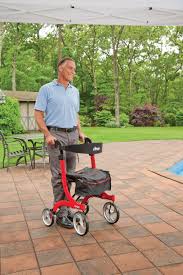
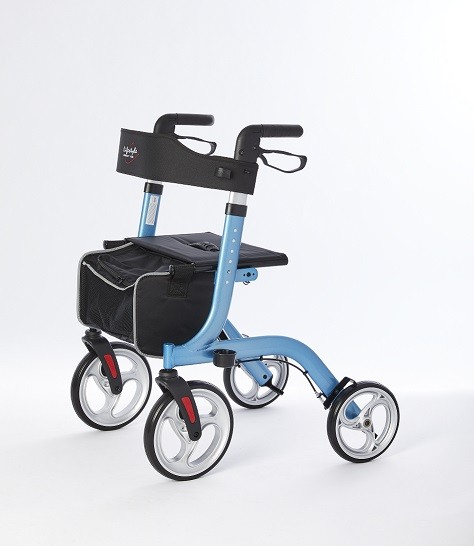
Translators
The translator is a new device is a transport chair and a Rollator all in one. These have adjustable backs that flip back-and-forth so you can easily sit down from either side of the device so if you are too tired to walk you can have someone push you. This is very handy and takes up less trunk space then having a walker and a wheelchair. They fold up like a wheelchair and weigh around 20-23 lbs depending on the model.

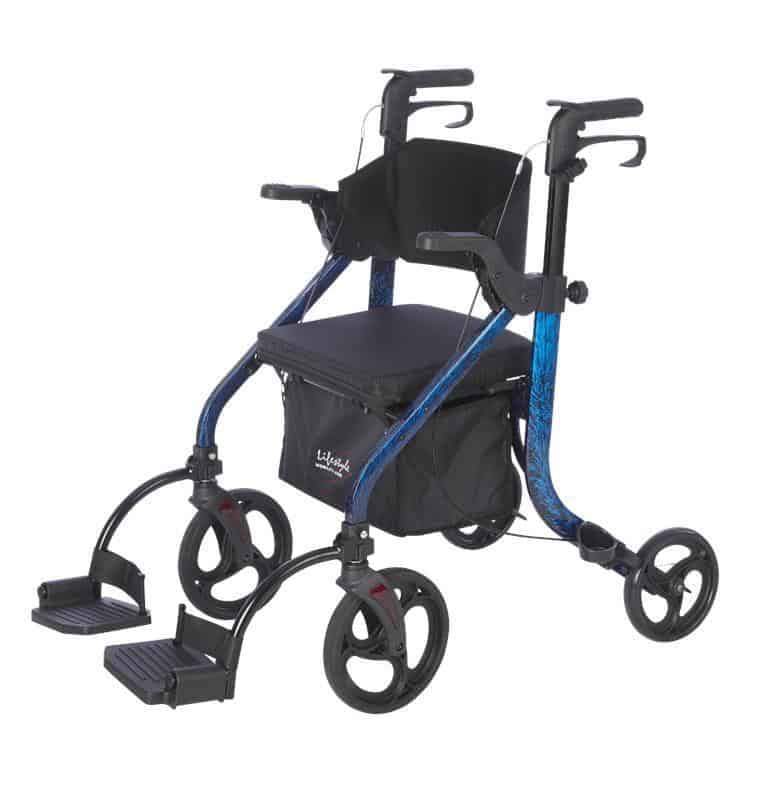
Upright walkers
The Upright Walker is the newest style of walker on the market. It is built with handles that sit up close to chest and shoulder area which allow you to lean on the armrest and stand up straighter. They definitely can help if you have back issues or have difficulty standing for long periods of time. They also have a seat so if you need a place to rest, you’ve got one.
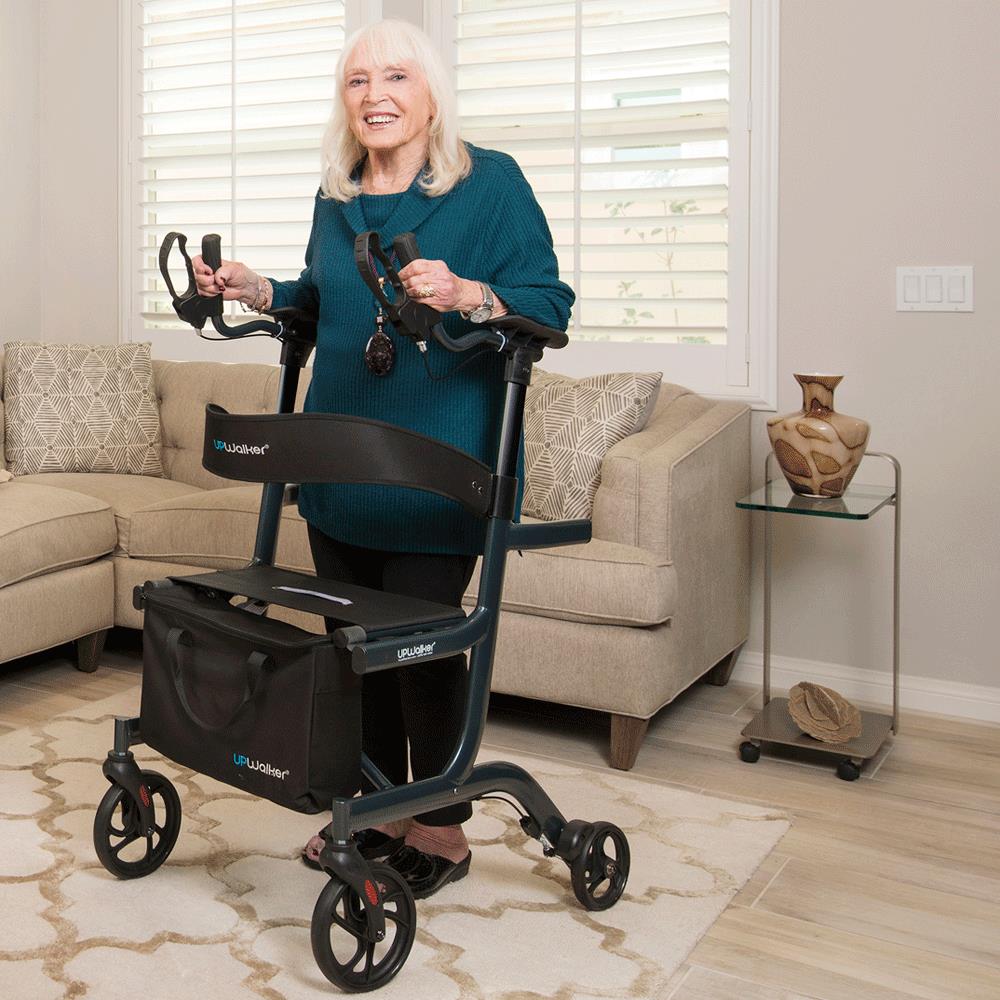

Heavy Duty Walkers & Rollators
There are certain models that are available with higher weight capacities, some go up to 500 pounds. The biggest thing to look at when searching for a heavy-duty device is the width of the seat between the armrest and make sure that it will adequately fit your needs. Not all versions of the walkers and Rollators that we spoke about in the above section are made with a higher weight capacity.
Are Rollators Dangerous?
If a rollator is used properly, they are not dangerous. They are a walking aid and not a transport device. They have 4 wheels so they do move side to side easier. Typically they are used for individuals that have issues with walking long distances and are not recommended for people that have balance issues. If you have concerns contact your physician or Physical therapist and get their opinion.
Why do People put Tennis Balls on Walker?
A standard rolling walker has two wheels in the front and glides on the back. These glides can wear out over time and if they do you will need to replace them. You can purchase glides at most medical supply stores but you will commonly see tennis balls on the back. Tennis balls are easy to find and work well as a replacement but do not hold up any better than the glides that come with rolling walkers. You will find that some walkers with wheels have rubber tips on the back instead of the glides and this is another reason tennis balls are added.
Does Medicare or my insurance pay for walkers and rollators?
This is a very important topic. Most insurances cover standard walkers but they are only going to pay for the most basic model. Insurance companies only reimburse around $50 for this item. They also cover rollators which they refer to as rolling walkers with seats. Insurance companies typically pay for a steel version and the reimbursement is around $75. Most of the rollators cost more than this so they are usually and out of pocket expense. We recommend calling your insurance company and ask them the following questions: Do you pay for walkers? If they say yes which they most certainly will ask them the most important question that no one asks. What’s the medical criteria for me to qualify for one? This is the question that most everyone does not ask. They assume that if their doctor writes an order for it, then its covered when in reality it isn’t. You have to show medical justification on why it’s needed so your doctor will have to do more than write walker on a prescription pad. They will need to show detailed information about the need and then the insurance company will have the final say if they pay for it or not.
If you like our blog please share it and know that we also have a You Tube Channel that we go into detail on a variety of these products along with other items like Mobility Scooters, Power Wheelchairs, and Lifts Chairs. Thanks for reading and have a great day.
3520A Central Pike
Hermitage, TN 37076
615-730-9438
332 Southgate Ct
Brentwood TN 37027
615-567-6116
Monday-Friday: 9am-5pm
Saturday & Sunday: Closed
3520A Central Pike
Hermitage, TN 37076
615-730-9438
332 Southgate Ct
Brentwood TN 37027
615-567-6116
Monday-Friday: 9am-5pm
Saturday & Sunday: Closed
Notifications